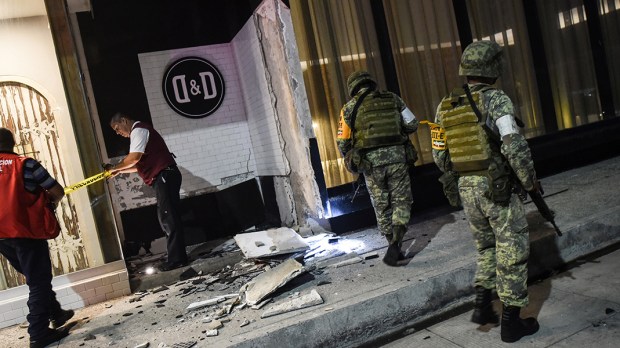Mexico was hit overnight by an earthquake that was stronger than the one in 1985, which killed almost 10,000 people.
But this quake, although it has claimed at least 32 lives, struck off the coast of the southern state of Chiapas, apparently minimizing the effect on Mexico City and its 8.85-million population.
Measuring 8.2 on the Richter Scale, the quake leveled some areas in near the epicenter when it struck around midnight.
According to the New York Times, at least two women died in the state of Chiapas, and two children died in the state of Tabasco—one when a wall collapsed, the other after a respirator lost power. “Local officials in Oaxaca have said residents there remain buried under the rubble of buildings,” the newspaper reported. “The effects were also felt in Guatemala, where at least one person died and homes along the border with Mexico were leveled.”
In the state of Oaxaca, the town of Juchitán appeared particularly hard-hit. In a video posted on the Facebook page of a local TV station, Pamela Terán, who introduced herself as a city councilor, begged the state and federal authorities for help. “Please, we urgently need as much help as you can send,” she said. “We need hands and manpower to try and dig out the people that we know are buried under the rubble.” The same TV station, Cortamortaja, reported the collapse of a hospital in Juchitán and showed images of doctors and nurses treating patients in the backyard.
The quake struck nearly 450 miles from the capital, while the devastating temblor in 1985 was much closer to the city. In addition, after the 1985 disaster, construction codes were reviewed and stiffened. Today, Mexico’s construction laws are as strict as those in the United States or Japan, the Times said.
The quake, caused when increasing stress is released after one slab of the earth’s crust slides under another is known to cause tsunamis. The Mexican government issued a tsunami warning off the coast of Oaxaca and Chiapas, but neither state appeared to have been adversely affected by waves.
Aftershocks, however, are a concern.

